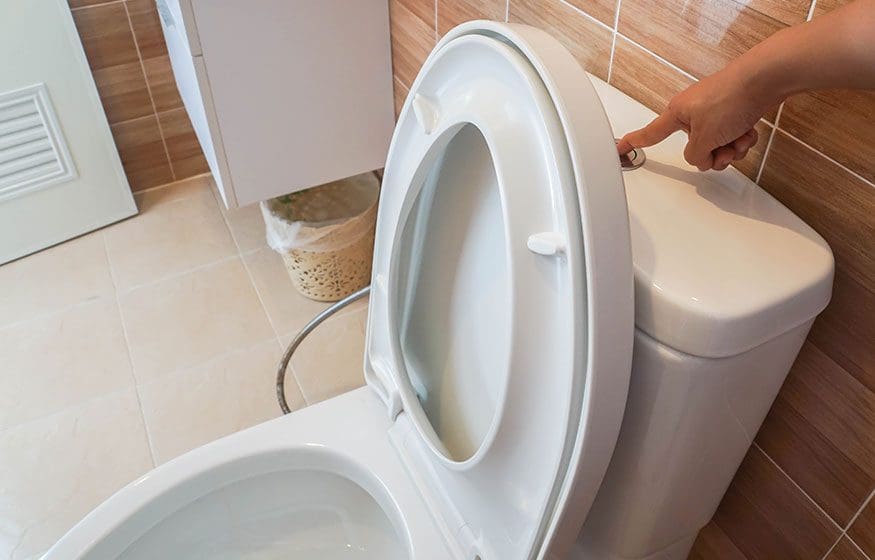Causes Of Condensation On Toilet Tanks & How To Stop It

Is your toilet tank experiencing condensation on the outside? While it may initially cause concern, it’s important to understand that this phenomenon is the result of basic science at work in your bathroom. However, it may not be a sign pointing to the immediate need for toilet repair. Here, we will explore the reasons behind toilet tank sweating. We’ll also look at the potential implications it can have, as well as practical solutions to address condensation on toilet tanks.
Why Does Your Toilet Sweat?
Similar to the droplets that form on a cold soda can, toilet condensation happens when the water inside the tank is cooler than the air that surrounds it. This temperature difference causes moisture to be taken out of the air and accumulate on the exterior of the toilet tank.
Can Condensation Impact Your Toilet?
Although a sweating toilet itself may not indicate a serious problem, it can result in a number of complications if left unaddressed. Here are some potential issues associated with persistent toilet tank condensation:
- Dampness and Mold Growth: Constant water dripping from the toilet onto the floor can create damp areas. It provides the ideal environment for mold and bacteria to thrive! Regular cleaning of the hard-to-reach areas behind and next to your toilet is necessary in order to prevent growth of these nasty organisms.
- Structural Damage: Excessive moisture from condensation can cause long-term damage to your bathroom. Depending on the type of flooring and your bathroom’s structure, prolonged exposure to moisture can result in hidden wood rot or floor weakening.
Effective Solutions to Reduce Toilet Tank Sweating
Here’s the good news: It’s relatively easy to handle toilet condensation. Here are three measures that you can take to either eliminate or minimize the problem:
Reduce Moisture Levels – To decrease the amount of moisture in the air, consider using the following steps:
- Ventilation – keep windows and doors open whenever possible to allow fresh air circulation and to reduce humidity. This is particularly important after baths or showers. What’s more, utilizing an exhaust fan can effectively remove excess moisture from the bathroom.
- Drying surfaces – take a few moments to dry off shower walls and doors after each use. By minimizing latent moisture in the room, you can reduce the overall humidity level.
- Dehumidifier – if your moisture problem still hasn’t been resolved, consider using a dehumidifier in the bathroom. This appliance will help extract excess moisture from the air. In doing so, you’ll reduce the likelihood of condensation.
Insulate the Toilet Tank – Insulating the toilet tank can help regulate its temperature which will, in turn, minimize the occurrence of condensation. Various insulation kits are available today, each designed specifically for the purpose of reducing condensation. By applying insulation to the exterior surface of your toilet tank, you can create a barrier that reduces the temperature difference between the water inside and the air surrounding your toilet tank.
Seek Professional Assistance – If all your efforts to reduce condensation prove futile, or if you think there may be an underlying plumbing issue, your best course of action is to consult a professional plumber. They can assess the problem, identify issues, and provide appropriate solutions that will address any existing plumbing problems contributing to the condensation.
Toilet Troubles May Call for Professional Plumbers
Are you tired of dealing with leaky faucets and malfunctioning toilets? Look no further than Made’s Plumbing, for all your plumbing needs. Our team of experts specializes in water heater work, drain cleaning, toilets, and more. Don’t wait for the problem to get worse. Call 817-962-2257 or use our convenient online form to get in touch.
